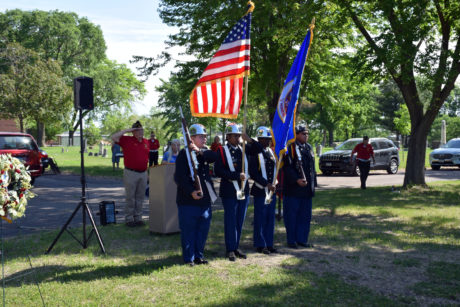Tales from Pioneers and Soldiers Memorial Cemetery
212th in a Series
By SUE HUNTER WEIR

Maria Elizabeth Siglin was born in Sweden on July 12, 1850. She emigrated to the United States in 1880, when she was 30 years old. One year later, on September 27, 1881, she married Johan Herman Siglin who was born in Sweden on April 27, 1851. He was the youngest of his parents’ six children.
In 1853, when Herman (his preferred name) was two years old, his father died. His mother died in 1861, leaving him orphaned by the time that he was ten years old. When he was 22, he emigrated to the United States, arriving on May 26, 1873. Immigration records indicate that he was single and traveling alone. Between 1873 and 1882, he lived in the United States, most likely near Clinton, Iowa, since that is where he and Maria were married.
Although census records suggest that they moved to Minnesota in 1882, Herman’s name didn’t appear in the Minneapolis City Directory until 1885. At the time, he was working as a well digger and living at Tenth Avenue South and 30th Street (later named Lake Street). On September 7, 1884, the St. Paul Daily Globe reported that Herman had fallen into a hole while digging a well and had fractured his right leg. He recovered and continued working as a well digger; he owned his own business, occasionally in partnership with others, for the rest of his life.
In 1898, the couple moved to 3025 15th Avenue South; their house is still standing. That same year, Herman experienced another mishap. On March 31st, he was conducting some business at the Guaranty Building downtown. He had only been in the building for a few minutes when he came out and found that his horse and buggy had been “boldly driven away by thieves.” He reported the theft to the police who believed it was the work of a “gang of thieves which [had] been operating in the Twin Cities for the past six weeks…” The reporter failed to mention whether his horse and buggy were recovered.
When he wasn’t working, Herman was an avid gardener. The following story appeared in the Minnesota Daily Times on October 2, 1892:
“Talk about the Minnesota banana belt has heretofore been generally conceded to be in the line of hyperbole, but J. H. Siglin…comes to the front with a story which lends of air of probability to the idea of raising bananas in Minnesota at this time of year. In his garden Mr. Siglin has a strawberry vine which is now bearing its second crop. It has fruit in all the stages of development from the blossom to the ripening berry and one specimen of the latter is as large in diameter as a silver dollar. The vine has been in Mr. Siglin’s garden all summer and has not yet been touched by frost.”
Herman Siglin died in City Hospital on October 10, 1905, from uremia. He was 54 years old. His obituary ran in the Minneapolis Tribune on October 12, 1905:
“Herman Siglin died Tuesday at City Hospital. Funeral from St. Paul’s Lutheran church, Bloomington Avenue and 25th St., Friday at 3 p.m. Interment at Layman’s.”
The following year, Maria moved to 1405 East Lake Street. By 1909, she had moved to 2730 13th Avenue South, and was working as a nurse, most likely in a private home. In 1920, when she was 69 years old, she moved to the Scandinavian Union Relief Home. The home was a charity founded by the Women’s Union Relief Society, an organization whose members attended a number of churches in Minneapolis. Their goal was to provide “aid and cheer to unfortunate folk,” primarily aging members of the city’s Scandinavian community. The home gave priority to those considered to have the greatest need.
Maria lived there for the next 19 years. She died on March 8, 1939, from auricular fibrillation at the age of 88 years, seven months, and 27 days. Herman and Maria are buried next to each other in unmarked graves in Lot 22, Block i-1.
Sue Hunter Weir is chair of Friends of the Cemetery, an organization dedicated to preserving and maintaining Minneapolis Pioneers and Soldiers Cemetery. She has lived in Phillips for almost 50 years and loves living in such a historic community.









